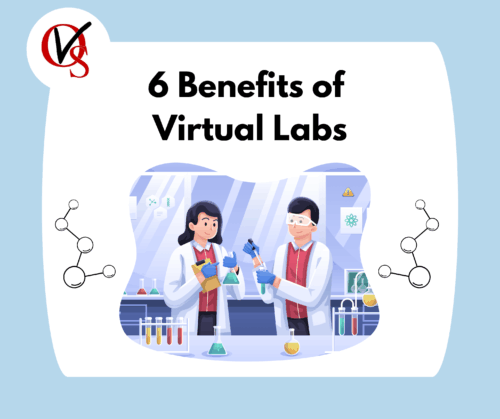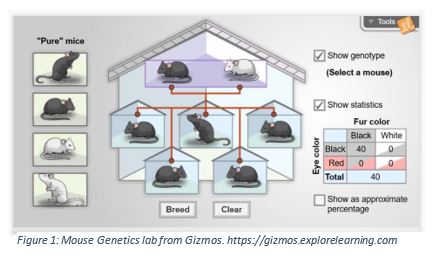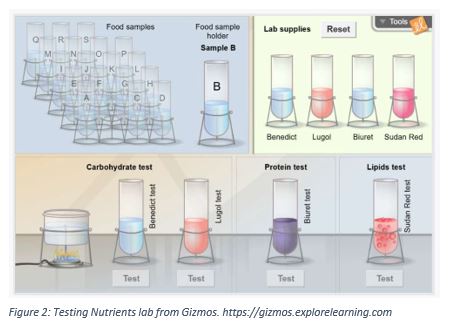
When you think of science class, you may conjure up images of lab coats, animal dissections, and chemistry sets. However, as a significant number of students turn to online schools, like the Ontario Virtual School, teachers have had to adapt the methods in which students perform practical activities. These hands-on learning experiences are not always possible in the virtual learning environment, so teachers have opted to utilize virtual lab simulations. Hands-on approaches have been the standard until recently, which is causing many students and parents to wonder: do virtual labs measure up?
Here are 6 benefits of doing science labs virtually:
1. Cost Effective
Virtual labs are a cost-effective solution for both students and schools. Students don’t need to buy equipment like lab sets, safety equipment, or outdoor gear. Additionally, schools don’t need to purchase costly equipment or fund the upkeep of laboratories and supplies. This means schools can keep tuition costs lower for students. Often times, like at OVS, the virtual labs are completely free for students to use, so students aren’t slapped with unexpected lab fees.
2. Ethical Practices
Many in-person labs involve activities that pose ethical dilemmas for students, such as dissecting animals or using live specimens in observational experiments. Virtual labs offer a simple solution by using virtual specimen. Students can observe or dissect many species without having to contemplate the morality of it. One such example is the mouse genetics lab thatstudents complete in the Grade 11 University Biology class at OVS.

3. Practical Observations
Other limitations for students are simply geographical. Many labs in biology and environmental sciences have students outside, observing the species around them. This, of course, means they are limited to whichever species live in the surrounding area and are not hiding away. Virtual labs allow students to “observe” species from around the globe, ranging from birds, to plants, to sea life. This also means student can speed up observation times, such as when breeding mice or growing a plant.
4. Access to Equipment and Materials
Often times, students are limited by a lack of school funding for equipment. Centrifuges, chemicals, Bunsen burners, microscopes – these are all costly materials that many high schools cannot afford. With virtual labs, students have access to all kinds of “expensive” equipment for free.
What’s more: some things, like centrifuges, take hours to process, but with virtual labs it can be completed in seconds. This allows students to try their hand at many different processes, with all kinds of materials and equipment that they may not have access to otherwise.

5. Safety and Accessibility
Labs can be dangerous places, with the chemicals, fire, and scalpels, not to mention observing live animals outside. Virtual labs are much safer and allow for a certain accessibility that in-person labs may not. If a student has trouble with mobility, motor skills, or vision, virtual labs may offer a solution. As this blog points out virtual labs can also allow students to safely observe dangerous or abstract phenomena, such as light rays.
6. Produce Comparable Results to In-Person Labs
Perhaps most importantly, virtual labs produce results similar to in-person labs, according to Celine, et al. (2022). This means that all the benefits of virtual labs are not coming at the cost of learning. A study completed in 2020 even found that physics students who participated in virtual labs “acquired deeper understanding” of the concepts and were “better prepared to carry out real experiments” (Hamad & Aljanarah). Students can feel confident that their virtual lab experience is valuable and important.
While in-person labs can be an important step in the learning journey, virtual labs are a great “soft introduction” to the real thing before post-secondary education. Many science courses at OVS, including SBI4U Grade 12 Biology, utilize virtual labs to keep students engaged in the curriculum and to offer valuable learning opportunities online. If you or your child are contemplating online school vs traditional school and which may be right for you, rest assured that the value of labs is not lost when choosing to attend a virtual school.

Written by: Michelle Miller (OVS Teacher)
Resources:
Celine, B., Nsanganwimana, F., & Tarmo, A. (2022). “Effectiveness of Virtual Laboratories in Teaching and Learning Biology: A Review of Literature.” International Journal of Learning, Teaching and Educational Research. 21. 1-17. 10.26803/ijlter.21.6.1. https://www.researchgate.net/publication/361683542_Effectiveness_of_Virtual_Laboratories_in_Teaching_and_Learning_Biology_A_Review_of_Literature
Hamed, G., & Aljanazrah, A. (2020). “The effectiveness of using virtual experiments on students’ learning in the General Physics Lab.” Journal of Information Technology Education: Research. https://www.informingscience.org/Publications/4668
